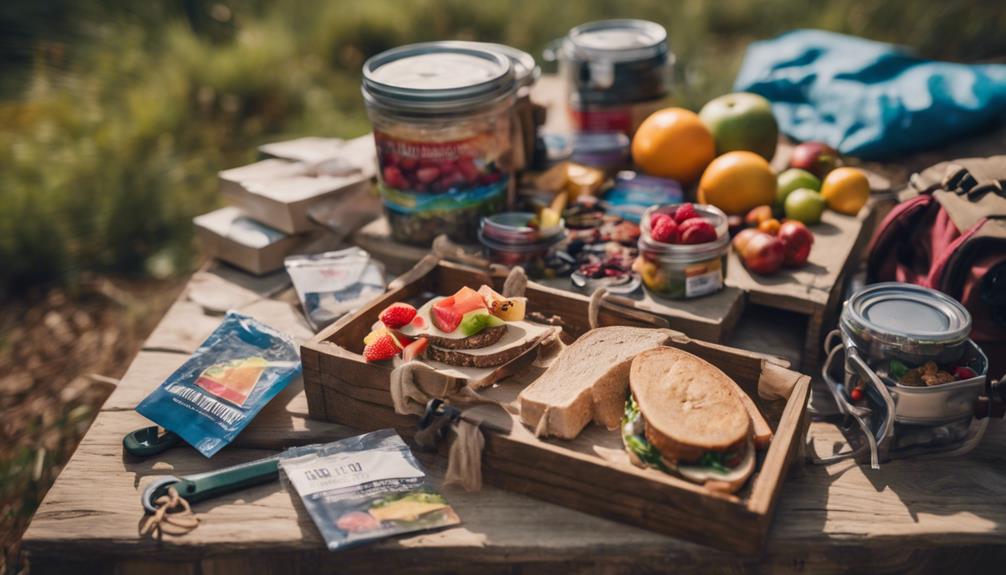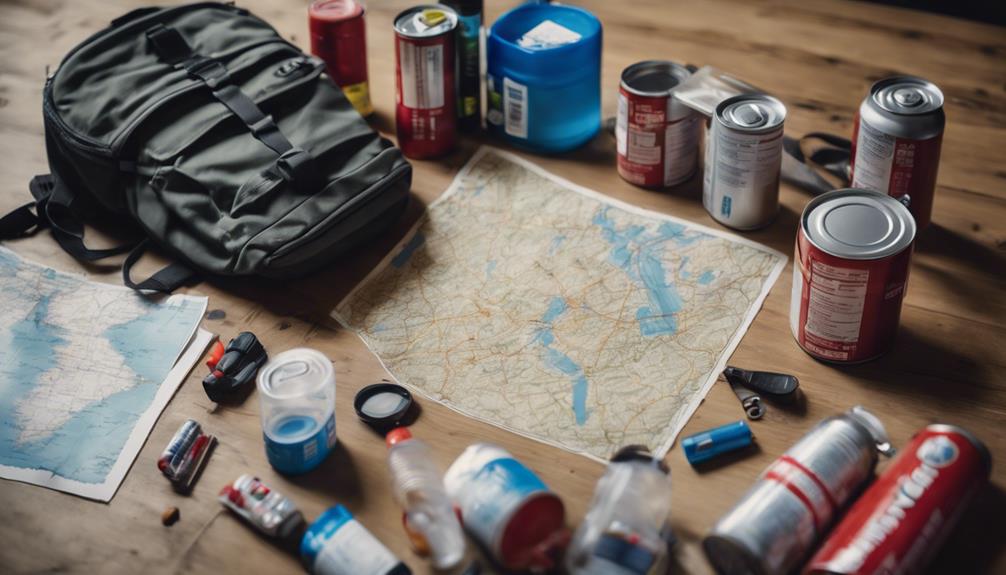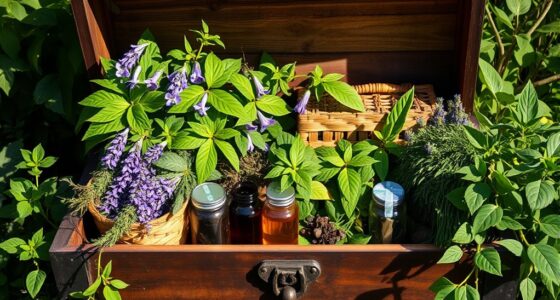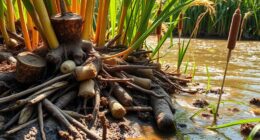Mastering primitive weapons is essential for building your survival skills. You'll learn to craft tools from simple materials like stones and wood, enhancing your ability to hunt and protect yourself. Start by creating spears or bows using appropriate wood types and natural cordage. Practice your techniques regularly to improve your accuracy and confidence, whether you're throwing a spear or shooting an arrow. These skills not only foster self-sufficiency but also connect you to ancestral knowledge. By honing your primitive weapons training, you'll prepare yourself for various challenges ahead, opening the door to exciting insights on survival strategies.
Key Takeaways
- Learn to identify and gather appropriate natural materials for crafting weapons like spears, bows, and arrows.
- Practice essential techniques such as throwing, shooting, and accuracy with various primitive weapons in diverse environments.
- Engage in regular training sessions to build confidence and refine your skills in using primitive weaponry effectively.
- Embrace cultural significance by understanding the traditional crafting methods and the ancestral knowledge behind each weapon.
Overview of Primitive Weapons
Primitive weapons, often crafted from readily available materials, serve as essential tools for survival and self-sufficiency in various scenarios.
These tools range from simple rocks to more complex designs like spears and bows. A spear, for instance, can be as basic as a sharpened stick, while a bow requires specific wood and cordage to create an effective hunting instrument.
Blowguns and slings are also straightforward to make and useful for hunting small game. Tomahawks, lightweight and versatile, can perform multiple tasks.
Mastering these weapons not only aids in acquiring food but also fosters a deeper connection with nature and enhances your survival skills. Each weapon type offers unique advantages, making them crucial assets in any survival situation.
Crafting Techniques and Materials
To effectively craft primitive weapons, you'll need a solid understanding of the materials available in your environment and the techniques for shaping them into functional tools.
Start by identifying suitable wood for spears and bows; flexible species like willow or yew work best. For arrowheads, gather stones or bones and use flint knapping to create sharp points.
Use natural cordage, like sinew or plant fibers, to bind components securely. Familiarize yourself with carving tools or sharp stones to refine your designs.
Experiment with different fletching materials, such as feathers or leaves, to stabilize your arrows.
Effective Usage and Practice

Mastering the crafting techniques discussed earlier sets the foundation for effective usage and practice of primitive weapons in various scenarios.
To enhance your skills, practice regularly in different environments, whether it's your backyard or a nearby forest. Focus on key techniques such as spear throwing, bow shooting, and blowgun accuracy.
Start with simple targets to build confidence and gradually increase difficulty. Timing and grip are essential; spend time perfecting your stance and aim.
Don't forget to refine your arrow-making and fletching skills, as they directly impact performance. Engaging with others interested in primitive weaponry can provide valuable feedback and tips.
Survival Benefits of Primitive Skills
Understanding primitive skills can greatly enhance your survival chances in challenging situations, as they equip you with the tools and techniques necessary to thrive in the wild. These essential survival skills include creating fire from natural materials, sourcing and purifying water, and building shelter to protect yourself from the elements. Mastering these techniques not only helps in emergency situations but also fosters a deeper connection with nature, allowing you to operate more confidently in the wilderness. By developing essential survival skills, you can turn adverse conditions into manageable challenges.
By mastering these skills, you gain self-sufficiency, allowing you to create food, shelter, and protection from the environment. When modern resources are scarce, knowing how to craft weapons or tools from natural materials can be invaluable.
You'll develop problem-solving abilities and resourcefulness, essential traits for survival. Additionally, practicing primitive skills builds confidence, fostering a sense of accomplishment that can be mentally beneficial during tough times.
Ultimately, embracing these skills prepares you for emergencies, ensuring you're ready to face whatever challenges come your way with resilience and adaptability.
Cultural Significance of Primitive Weapons

Primitive weapons hold deep cultural significance, reflecting the values, traditions, and survival strategies of indigenous peoples throughout history. Each weapon tells a story, representing the ingenuity and adaptability of communities facing environmental challenges.
When you learn about these tools, you connect with the ancestral knowledge that has shaped cultural identities. Crafting and using primitive weapons link you to past generations, emphasizing the importance of resourcefulness and skill.
These artifacts aren't just historical relics; they embody the spirit of resilience and the essence of survival. Understanding their cultural context enriches your appreciation for the techniques and traditions that have been passed down.
Modern Adaptations and Innovations
Exploring the cultural significance of primitive weapons sets the stage for appreciating how modern adaptations and innovations have transformed these ancient tools into practical resources for contemporary survivalists.
Today, you can enhance your primitive weaponry skills by integrating modern materials like fiberglass for bows or synthetic cords for spear construction. These innovations make crafting easier and more efficient without losing the essence of traditional techniques.
Additionally, you might find that purchasing pre-made modern versions of primitive weapons—like high-quality blowguns or tomahawks—can save you time while still allowing you to practice essential skills.
Incorporating these adaptations into your survival toolkit can make a real difference, blending the old with the new for effective survival strategies in today's world.
Essential Gear for Practicing Skills

Having the right gear is essential for effectively practicing your primitive weapon skills and enhancing your overall survival proficiency. Below is a list of must-have items to support your training:
| Gear Item | Purpose |
|---|---|
| Spear | For throwing and hunting |
| Bow and Arrows | For archery practice |
| Blowgun | For small game hunting |
| Tomahawk | For throwing and chopping tasks |
| Fletching Kit | To make and repair arrows |
Investing in quality materials, as well as tools for crafting and repairing your weapons, can greatly improve your practice sessions. With the right gear, you'll build confidence and skill, preparing you for real-world survival situations.
Frequently Asked Questions
What Are the Best Resources for Learning Primitive Weapon Skills?
To learn primitive weapon skills, you should explore books, online courses, and local workshops. Engaging with experienced practitioners and joining survival groups can provide hands-on experience, enhancing your understanding and proficiency in crafting and using these tools.
How Do I Find Materials for Crafting Primitive Weapons?
To find materials for crafting primitive weapons, explore local forests and rivers. Look for suitable wood, stones, and natural fibers. Scavenge or barter with others, and don't hesitate to get creative with what you find!
Can Children Safely Learn to Use Primitive Weapons?
“Teach a child to fish, and they'll eat for a lifetime.” Yes, children can safely learn to use primitive weapons with proper supervision and age-appropriate tools, fostering skills, responsibility, and an appreciation for nature.
What Legal Considerations Should I Be Aware of When Using Primitive Weapons?
When using primitive weapons, you should consider local laws regarding hunting, weapon ownership, and use in public spaces. Always check regulations to verify you're compliant and avoid potential legal issues or misunderstandings.
How Can I Incorporate Primitive Weapons Into Outdoor Survival Training?
Incorporating primitive weapons into outdoor survival training's like weaving a tapestry of skills. You can start by practicing spear throwing, crafting bows, and mastering blowguns, enhancing your ability to adapt and thrive in challenging environments.
Conclusion
Mastering primitive weapons isn't just about wielding a spear or stringing a bow; it's about embracing a time-honored dance with nature.
As you hone these skills, you'll weave resilience into your life, transforming simple materials into lifelines.
In this journey, you'll find not only survival but a deeper connection to the world around you.
So, take up the challenge—craft, practice, and discover the whispers of ancient wisdom that can guide you through modern uncertainties.










